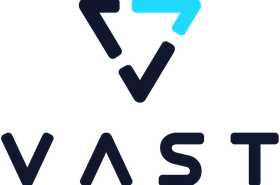With artificial intelligence (AI) becoming more common in business operations, the ethical implementation of AI is of the highest priority. The upcoming European Commission AI governance legislation will ensure that the day-to-day interaction of these technologies remains ethical and legal.
The AI act - a world first - provides a roadmap for far-reaching changes to how we use AI looking to ethically regulate AI application developers.
By implementing strict legislation similar to GDPR and Sarbanes Oxley, AI governance will implement penalties for not complying, and fines of €30 million, or six percent of global annual corporate turnover, has been proposed by the EU AI Act, suggesting that the highest penalty should be given.
Businesses should assess their workflows and identify the areas where AI is implemented, as well as the potential risks it brings.
The time to act is now
Governance will impact everything from digital manufacturing automation to apps mimicking back-office human workers. Government offices, law and healthcare industries using AI to extract data, fill in forms, or move files will need to comply.
If you use robotic operating, BPI workflow management, ICR converting handwriting into computer-readable text, or deep-level AI or ML, you need to comply. Automation is covered, so companies need to examine how they use IA, and ensure teams meet regulatory needs as they continuously improve automated tasks or processes. The good news is by creating an auditable digital trail, IA is ideal for AI regulation as it can make efficiencies across workflows, and have full, auditable insights – a superpower in itself.
Creating AI governance within your business
By having a robust AI framework, organizations can be responsible, and have oversight of development and deployment – fostering ethical practices and enhancing trust among users. Ultimately, everyone has responsibility, starting with internal AI guidelines:
- Top-down: Business leaders are accountable for AI governance, so assign a chief data officer or audit committee to improve data quality, security, and management.
- Bottom-up: Individual teams can take responsibility for the data security, modeling, and their tasks to ensure standardization and scalability.
- Modeling: An effective governance model should monitor and update performance and the organization’s overall goals.
- Transparency: Tracking your AI’s performance is equally important, as it ensures transparency to stakeholders and customers, and is essential for risk management.
Working within AI governance frameworks
Anyone utilizing AI must maintain transparency and compliance – a challenge as standards are in the making – and those disregarding governance face leaks, fraud, and bypassed privacy.
Governments, companies, and academia continue to establish guidelines and frameworks, with several real-world examples addressing the ethical, legal, and societal implications of artificial intelligence.
The EU’s GDPR, while not focused on AI, includes data protection and privacy provisions related to AI systems. Additionally, the Partnership on AI and Montreal Declaration for Responsible AI focus on research, best practices, and open development dialogue.
Canada’s “Pan-Canadian AI Strategy” emphasizes the development and use of AI to benefit society, including initiatives related to AI ethics, transparency, and accountability. Google’s AI Principles outline its commitment to AI for social good, avoiding harm, and ensuring fairness and accountability. Microsoft, IBM, and Amazon have similar guidelines.
A 14-step guide to begin your AI governance journey
Ensuring AI governance involves establishing processes, security, and forecasting practices. Those using AI must include AI risk and bias checks. In addition, there are several strategic approaches to AI governance.
- Development guidelines: Establish AI regulatory and best practices based on data sources, training, engineering and model evaluation, potential risks, and benefits.
- Data management: Ensure training data and AI models are accurate and compliant with privacy and regulatory requirements.
- Bias mitigation: Incorporate ways to address bias in AI models to ensure fair outcomes.
- Transparency: Require AI models to provide explanations for decisions.
- Model validation and testing: Conduct regular validation and testing of AI models.
- Monitoring: Monitor AI performance with a human-in-the-loop to meet needs.
- Version control: Keep track of AI models, training data, configurations, and metrics.
- Risk management: Implement security practices to protect AI from cybersecurity attacks, data breaches and other security risks.
- Documentation: Maintain documentation of the entire AI model lifecycle, including data sources, testing, and training, hyperparameters, and evaluation metrics.
- Training and Awareness: Train employees on AI ethics, practices, and potential societal impacts of AI technologies and the importance of governance across the organization.
- Governance board: Establish a governance team responsible for AI.
- Regular auditing: Audit AI model performance, and ethical algorithm compliance.
- User feedback: Provide mechanisms for AI user feedback on behavior.
- Continuous improvement: Incorporate lessons learned from deploying AI into the governance process to continuously improve development and deployment.
The future of governance
Building out AI governance that aligns with organizational values, supported by a willingness to adapt to technological changes and developments, is an ongoing commitment.
As artificial intelligence and automation are increasingly implemented into business operations, it is essential to have safety regulations and governance regimes put in place to ensure data is kept secure, accurate, and compliant. Taking these steps will help ensure you develop and deploy AI in a manner that is both responsible and ethical.





